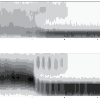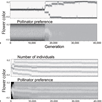Publications/ Presentations
Research articles
Kagawa, K., Takimoto, G. 2014. Predation on pollinators promotes co-evolutionary divergence in plant-pollinator mutualisms. American Naturalist 183: 229-242.
Takahashi, Y., Kagawa, K., Svensson, E. I., Kawata, M. 2014. Evolution of increased phenotypic diversity enhances population performance by reducing sexual harassment in damselflies. Nature Communications 5: 4468.
Kagawa, K., Takimoto, G. 2016. Inaccurate color discrimination by pollinators promotes evolution of discrete color polymorphism in food-deceptive flowers. American Naturalist 187: 194-204.
Kagawa, K., Takimoto, G. 2017. Hybridization can promote adaptive radiation by means of transgressive segregation. Ecology Letters accepted.
Symposium
Kagawa, K., Takimoto, G. 2012. How are novel traits evolve? New insights from theoretical studies (in Japanese). The 28th Annual Meeting of Society of Population Ecology, S4, Funabashi, Chiba, Japan.
Suzuki, M., Kagawa, K. 2014. Understanding plant evolution from animal cognitive behavior: toward coevolution of plant ecology and behavioral ecology. (in Japanese) The 61th Annual Meeting of Ecological Society of Japan, W03, Hiroshima, Japan.
Presentations at scientific meetings
Kagawa, K. 2012. Why are rewardless flowers divers? A simulation study. The 97th Annual Meeting of Ecological Society of America, PS102-168, Portland, Oregon, US.
Kagawa, K. , Takimoto, G.2017. Inaccurate Color Discrimination by Pollinators Promotes Evolution of Discrete Color Polymorphism in Food-Deceptive Flowers. XIX International Botanical Congress, T2-07-06, Shenzhen, China.
Presentations without review
Kagawa, K., Takimoto, G. 2010. Is asymmetric structured food web stable for evolutionary changes? (in Japanese). The 57th Annual Meeting of Ecological Society of Japan, P2-077, Tokyo, Japan.
Kagawa, K., Takimoto, G. 2011. A possibility of sympatric speciation via pollination interaction (in Japanese). The 58th Annual Meeting of Ecological Society of Japan, P2-291, Hokkaido, Japan.
Kotaro, K. , Takimoto, G. 2012. Why rewardless flowers are diverse? The 5th East Asian Federation of Ecological Societies, P2-140A, Shiga, Japan.
Kagawa, K. 2012. Why and how color polymorphism in rewardless flowers evolved? ~A simulation study~ (in Japanese). The 28th Annual Meeting of Society of Population Ecology, S4-3, Funabashi, Chiba, Japan.
Kagawa, K. , Takimoto, G.2014. What kind of lineages will undergo adaptive radiation? ~Evolutionary roles of hybridization and sexual selection~ (in Japanese). The 61th Annual Meeting of Ecological Society of Japan, PA2-010, Hiroshima, Japan.
Kagawa, K. , Takimoto, G.2015. Roles of hybridization and magic traits in adaptive radiations. The 62th Annual Meeting of Ecological Society of Japan, I1-25, Kagoshima, Japan.
Kagawa, K. 2016. Under what conditions does hybridization promote adaptive radiation? ANU-UC-ISM Joint Symposium on Environmental Statistics 2016, Canberra, Australia.






